#d1dad3 Color Information
In a RGB color space, hex #d1dad3 is composed of 82% red, 85.5% green and 82.7% blue. Whereas in a CMYK color space, it is composed of 4.1% cyan, 0% magenta, 3.2% yellow and 14.5% black. It has a hue angle of 133.3 degrees, a saturation of 10.8% and a lightness of 83.7%. #d1dad3 color hex could be obtained by blending #ffffff with #a3b5a7. Closest websafe color is: #cccccc.
-
- R 82
- G 85
- B 83
-
- C 4
- M 0
- Y 3
- K 15
● #d1dad3 color description : Light grayish lime green.
#d1dad3 Color Conversion
The hexadecimal color #d1dad3 has RGB values of R:209, G:218, B:211 and CMYK values of C:0.04, M:0, Y:0.03, K:0.15. Its decimal value is 13753043.
| Hex triplet | d1dad3 | #d1dad3 |
|---|---|---|
| RGB Decimal | 209, 218, 211 | rgb(209,218,211) |
| RGB Percent | 82, 85.5, 82.7 | rgb(82%,85.5%,82.7%) |
| CMYK | 4, 0, 3, 15 | |
| HSL | 133.3°, 10.8, 83.7 | hsl(133.3,10.8%,83.7%) |
| HSV (or HSB) | 133.3°, 4.1, 85.5 | |
| Web Safe | cccccc | #cccccc |
| CIE-LAB | 86.207, -4.315, 2.379 |
|---|---|
| XYZ | 63.121, 68.401, 71.502 |
| xyY | 0.311, 0.337, 68.401 |
| CIE-LCH | 86.207, 4.927, 151.134 |
| CIE-LUV | 86.207, -4.665, 4.355 |
| Hunter-Lab | 82.705, -8.5, 6.635 |
| Binary | 11010001, 11011010, 11010011 |
Color Schemes with #d1dad3
Alternatives to #d1dad3
Below, you can see some colors close to #d1dad3. Having a set of related colors can be useful if you need an inspirational alternative to your original color choice.
#d1dad3 Preview
This text has a font color of #d1dad3.
<span style="color:#d1dad3;">Text here</span>This paragraph has a background color of #d1dad3.
<p style="background-color:#d1dad3;">Content here</p>This element has a border color of #d1dad3.
<div style="border:1px solid #d1dad3;">Content here</div>.text {color:#d1dad3;}.background {background-color:#d1dad3;}.border {border:1px solid #d1dad3;}Shades and Tints of #d1dad3
A shade is achieved by adding black to any pure hue, while a tint is created by mixing white to any pure color. In this example, #070807 is the darkest color, while #fcfdfd is the lightest one.
-
#070807
#070807rgb(7,8,7) -
#0f1310
#0f1310rgb(15,19,16) -
#181e1a
#181e1argb(24,30,26) -
#212923
#212923rgb(33,41,35) -
#2a342c
#2a342crgb(42,52,44) -
#323f35
#323f35rgb(50,63,53) -
#3b4a3e
#3b4a3ergb(59,74,62) -
#445448
#445448rgb(68,84,72) -
#4d5f51
#4d5f51rgb(77,95,81) -
#556a5a
#556a5argb(85,106,90) -
#5e7563
#5e7563rgb(94,117,99) -
#67806c
#67806crgb(103,128,108) -
#708b76
#708b76rgb(112,139,118)
-
#7a9480
#7a9480rgb(122,148,128) -
#859d8a
#859d8argb(133,157,138) -
#90a695
#90a695rgb(144,166,149) -
#9bae9f
#9bae9frgb(155,174,159) -
#a6b7a9
#a6b7a9rgb(166,183,169) -
#b0c0b4
#b0c0b4rgb(176,192,180) -
#bbc9be
#bbc9bergb(187,201,190) -
#c6d1c9
#c6d1c9rgb(198,209,201) -
#d1dad3
#d1dad3rgb(209,218,211) -
#dce3dd
#dce3ddrgb(220,227,221) -
#e7ebe8
#e7ebe8rgb(231,235,232) -
#f2f4f2
#f2f4f2rgb(242,244,242) -
#fcfdfd
#fcfdfdrgb(252,253,253)
Tones of #d1dad3
A tone is produced by adding gray to any pure hue. In this case, #d4d7d5 is the less saturated color, while #aefdbf is the most saturated one.
-
#d4d7d5
#d4d7d5rgb(212,215,213) -
#d1dad3
#d1dad3rgb(209,218,211) -
#ceddd1
#ceddd1rgb(206,221,209) -
#cbe0cf
#cbe0cfrgb(203,224,207) -
#c7e4ce
#c7e4cergb(199,228,206) -
#c4e7cc
#c4e7ccrgb(196,231,204) -
#c1eaca
#c1eacargb(193,234,202) -
#beedc8
#beedc8rgb(190,237,200) -
#bbf0c7
#bbf0c7rgb(187,240,199) -
#b7f4c5
#b7f4c5rgb(183,244,197) -
#b4f7c3
#b4f7c3rgb(180,247,195) -
#b1fac1
#b1fac1rgb(177,250,193) -
#aefdbf
#aefdbfrgb(174,253,191)
Color Blindness Simulator
Below, you can see how #d1dad3 is perceived by people affected by a color vision deficiency. This can be useful if you need to ensure your color combinations are accessible to color-blind users.
